Are you searching for effective ways to engage your patients and improve their adherence to treatment plans? Engaging patients is essential for better health outcomes and reducing healthcare costs. This article will provide you with 10 actionable strategies to enhance patient engagement. You’ll learn how to leverage technology, personalize interactions, and improve communication to ensure your patients are more involved in their care.
Key Takeaways
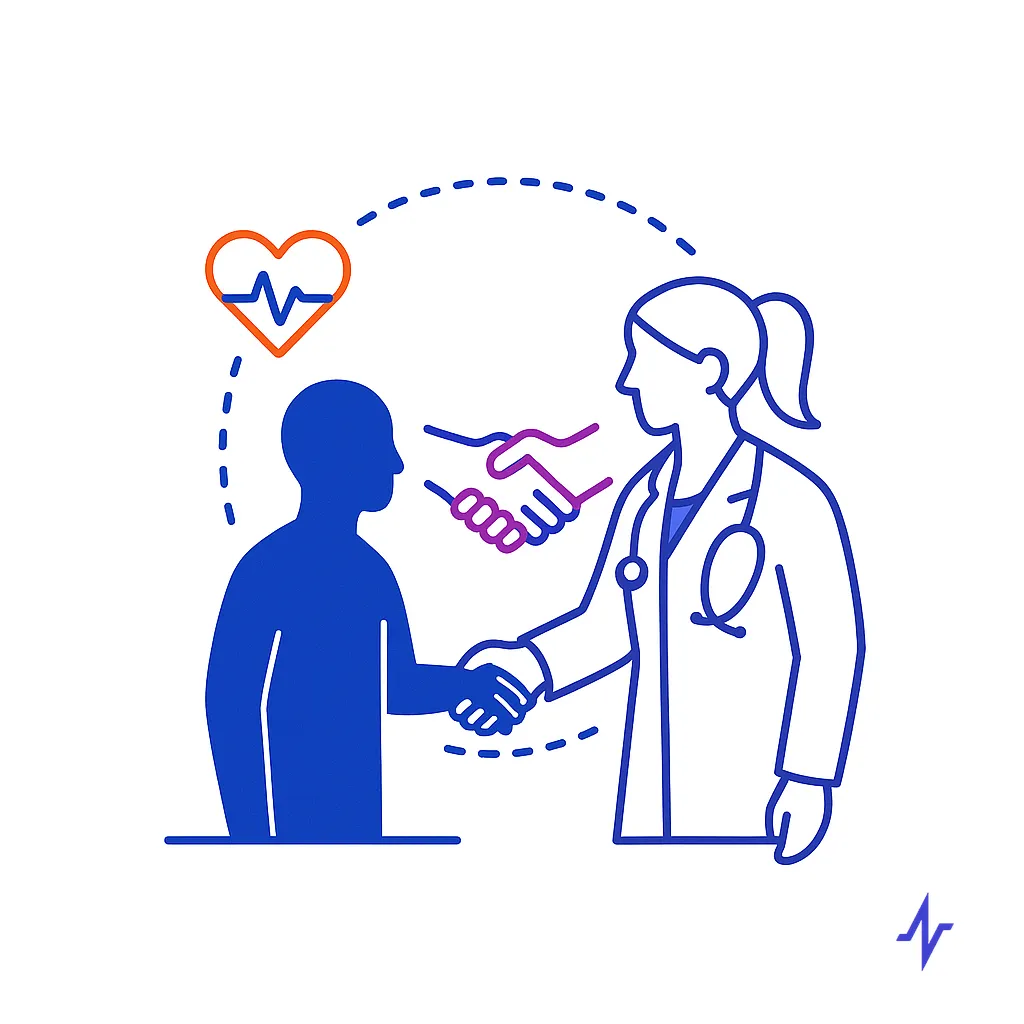
- Effective patient engagement is key to improved health outcomes and reduced healthcare costs; it fosters proactive patient involvement in their care.
- A patient-centric approach focusing on personalized care, effective communication, and trust between patients and providers is essential for enhancing engagement and adherence.
- Leveraging technology and continuous aftercare are critical for maintaining patient engagement, ensuring adherence to treatment plans, and improving overall patient satisfaction.
The Importance of Patient Engagement
Effective patient engagement is essential in modern healthcare. Actively engaged patients tend to adhere to their treatment plans, resulting in better health outcomes and reduced healthcare costs.
This active participation not only enhances the effectiveness of treatments but also diminishes the need for expensive emergency procedures and hospital readmissions, helping to drive patient engagement and improving patient engagement.

A comprehensive patient engagement strategy strengthens trust between patients and healthcare providers, reducing unmet medical needs and making patients feel valued. Health care professionals play a key role in supporting patient engagement and medication adherence by fostering communication, providing education, and utilizing tools such as reminder systems and telemedicine.

Moreover, higher patient engagement directly correlates with improved health outcomes.
Engaged patients are more proactive in their health management, leading to fewer complications and better overall well-being.
In essence, patient engagement is not just important; it is imperative for achieving optimal clinical outcomes and enhancing the quality of healthcare delivery. Health care systems are crucial in supporting engagement initiatives and improving the patient’s health by designing programs that promote health literacy and effective patient-provider interactions.
Barriers to Patient Engagement
While patient engagement is essential for achieving better health outcomes, several barriers can limit its effectiveness. These obstacles can be grouped into three main categories: patient-related, provider-related, and system-related factors.
Patient-related barriers often include socioeconomic challenges, limited health literacy, and difficulties accessing healthcare services.
Patients facing financial hardship or lacking transportation may struggle to attend appointments or follow through with treatment plans.
Additionally, inadequate health literacy can make it difficult for patients to understand medical instructions or the importance of adherence, leading to poor health outcomes.

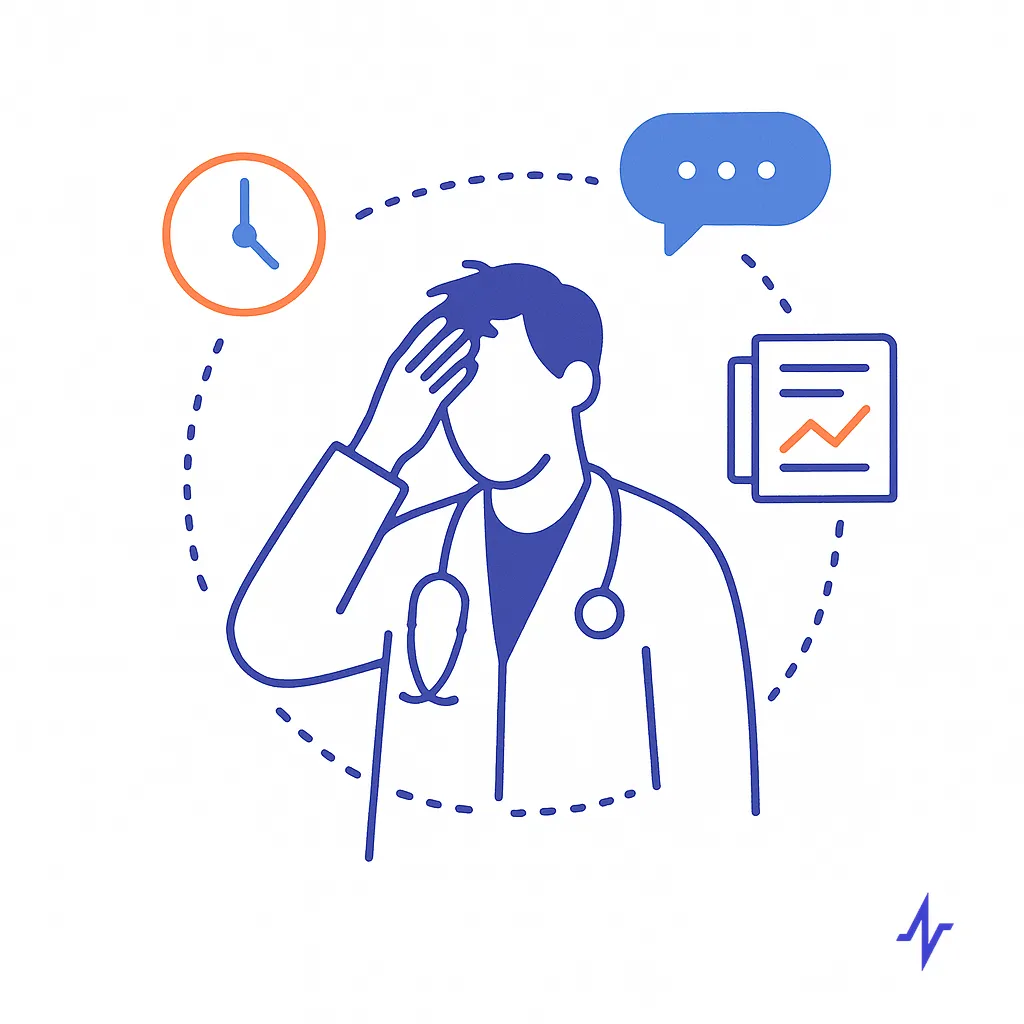
Provider-related barriers stem from issues such as limited time during consultations, insufficient training in patient engagement strategies, and communication gaps.
When healthcare providers are unable to dedicate enough time to patient education or lack the skills to foster meaningful interactions, patient engagement suffers.
System-related barriers involve the complexity of healthcare systems, insufficient resources, and a lack of institutional support for engagement initiatives.
Overly complicated processes, fragmented care, and limited access to digital tools can all hinder efforts to improve patient engagement.

Addressing these barriers requires a comprehensive approach. Healthcare organizations and providers must develop and implement effective engagement strategies, invest in patient education, and simplify healthcare processes. By identifying and overcoming these obstacles, the healthcare industry can improve patient engagement and drive better health outcomes for all.
Socioeconomic Status and Health Literacy
Socioeconomic status and health literacy are two of the most significant barriers to effective patient engagement. Patients with lower incomes or limited education often face additional challenges in accessing healthcare services, understanding their health conditions, and adhering to prescribed treatment plans. These challenges can lead to disparities in health outcomes and make it harder for patients to actively participate in their care.

Healthcare providers can help bridge these gaps by prioritizing patient education and using clear, simple language when discussing diagnoses and treatment options.
Offering support services—such as medication management programs, transportation assistance, or connections to community resources—can also make a meaningful difference for vulnerable populations.
Healthcare organizations should develop targeted patient engagement strategies that specifically address the needs of patients with low health literacy or socioeconomic disadvantages. This might include creating culturally relevant educational materials, providing interpreter services, or leveraging digital tools to reach patients where they are. By focusing on these engagement strategies, providers can empower patients to better understand their treatment plans, improve adherence, and ultimately achieve better health outcomes.
Building a Patient-Centric Approach
A patient-centric approach is pivotal for enhancing engagement, emphasizing timely access to health care delivery, continuity of care, and transparent communication within the health care system. Prioritizing these elements lays the groundwork for a more engaged patient population.
Family and caregivers play a crucial role in patient care, offering support and encouragement that helps patients adhere to treatment plans.
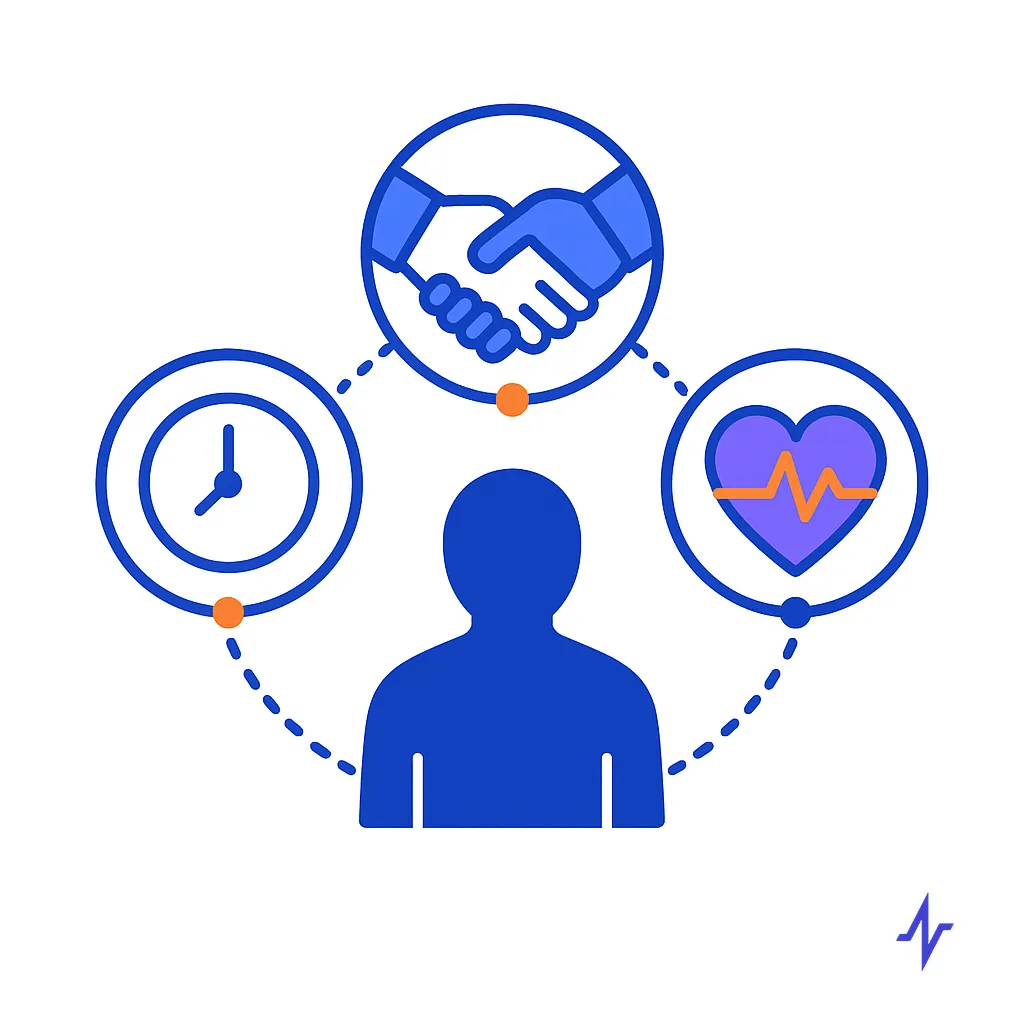
Elderly patients often face unique challenges such as cognitive decline and polypharmacy, making it essential to use tailored engagement strategies, including simplified instructions and compliance aids, to support their medication adherence. Involving a health care team and health care providers, along with a medical professional, creates a more supportive and comprehensive medical care environment.
Understanding social determinants of health, such as living environment, economic status, and social support networks, is crucial in patient-centric care. Addressing these factors and tailoring care plans to individual needs enhances patient engagement and improves health outcomes, ultimately contributing to health related quality of life. For patients with chronic diseases, it is especially important to design an appropriate treatment regimen that supports long-term management and addresses the specific barriers these patients may face.
What is Patient Adherence?
Patient adherence involves following prescribed medications and medicine taking treatment plans, including taking medications prescribed by their healthcare provider, as well as medication use, dietary choices, and lifestyle modifications in disease management. It reflects a proactive commitment to health management and personal responsibility for positive outcomes.
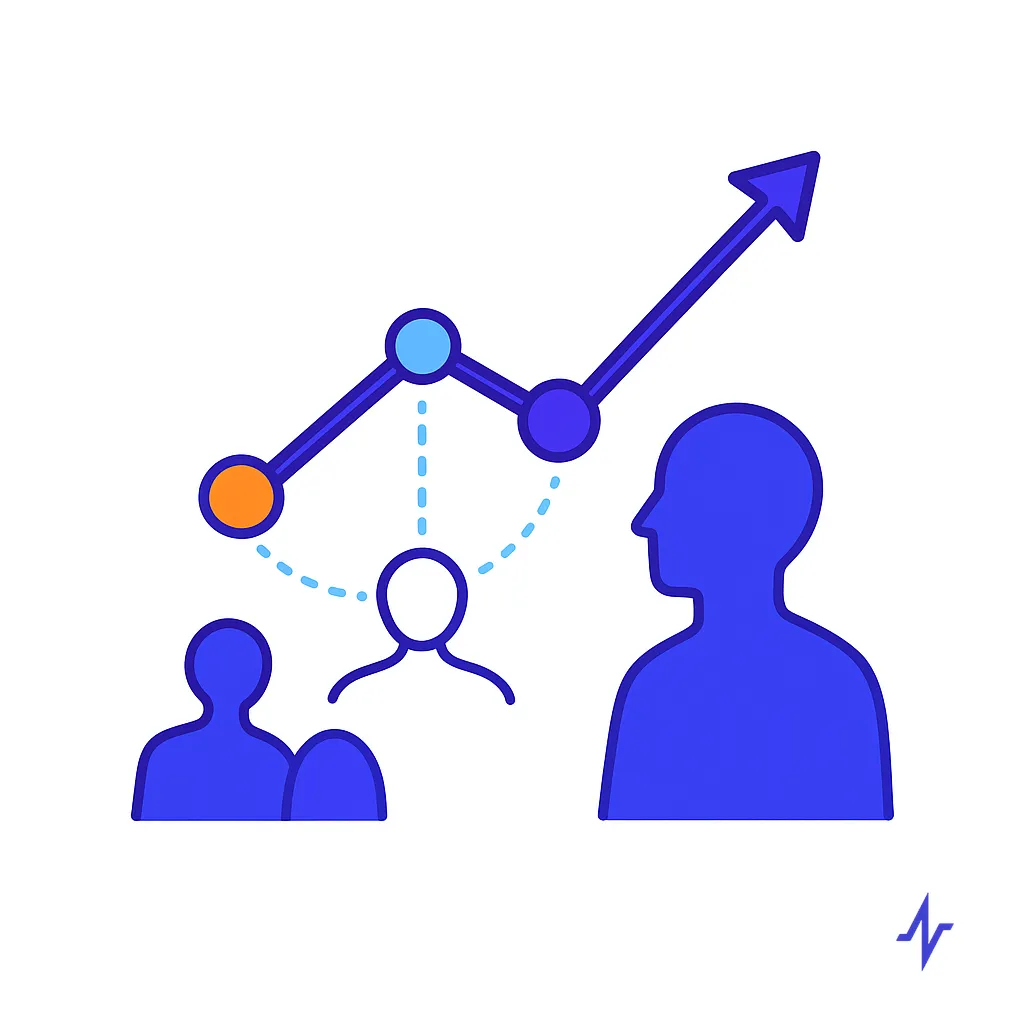
Adherence differs from compliance in that it promotes patient autonomy and informed decision-making, empowering patients to take control of their health by actively participating in their treatment plans and avoiding non compliance, utilizing compliance aids.
A patient’s ability to understand and follow their treatment plan is crucial for successful adherence.
Adherence leads to beneficial behavior changes supporting long-term health. Patients with chronic illnesses often face particular challenges in maintaining adherence, making consistent use of medications prescribed especially important for effective management of chronic diseases. Actively involved patients are more likely to experience positive health outcomes, essential for better clinical results and effective healthcare delivery, which can help to improve adherence and reduce instances of poor adherence while improving adherence.
The Role of Patient Education in Increasing Engagement
Patient education is crucial for increasing engagement and adherence. Effective education enhances health literacy, enabling patients to understand and act on health information, leading to improved self-management and better health outcomes.
The World Health Organization has highlighted the importance of improving health literacy and medication adherence, recommending global strategies to address barriers and promote better patient outcomes.

Clear communication is vital in patient education. Using simple, straightforward language helps patients understand their conditions and treatment options, fostering a stronger patient-physician partnership, encouraging shared decision-making and responsibility for health outcomes in clinical pharmacology.
Informed patients are more likely to engage in self-care and make informed health decisions, understanding the importance of adhering to treatment plans. Prioritizing patient education creates a more engaged and proactive patient population, leading to better health outcomes and satisfaction.
Leveraging Technology for Better Patient Engagement
In today’s digital age, technology is key for enhancing patient engagement. Telemedicine breaks down geographical barriers, allowing remote consultations and improving access for underserved patients. Telehealth offers convenient care access, especially for those with chronic conditions, ensuring ongoing engagement in health management.
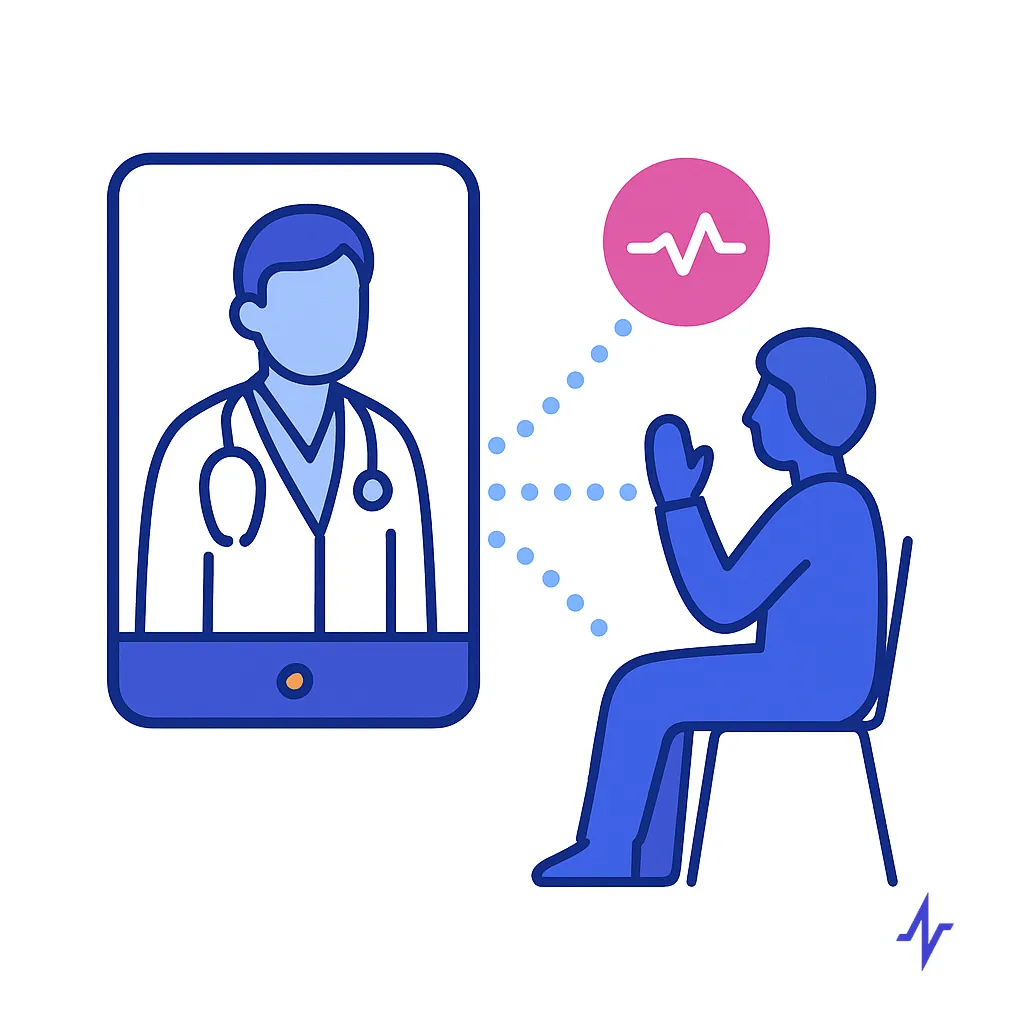
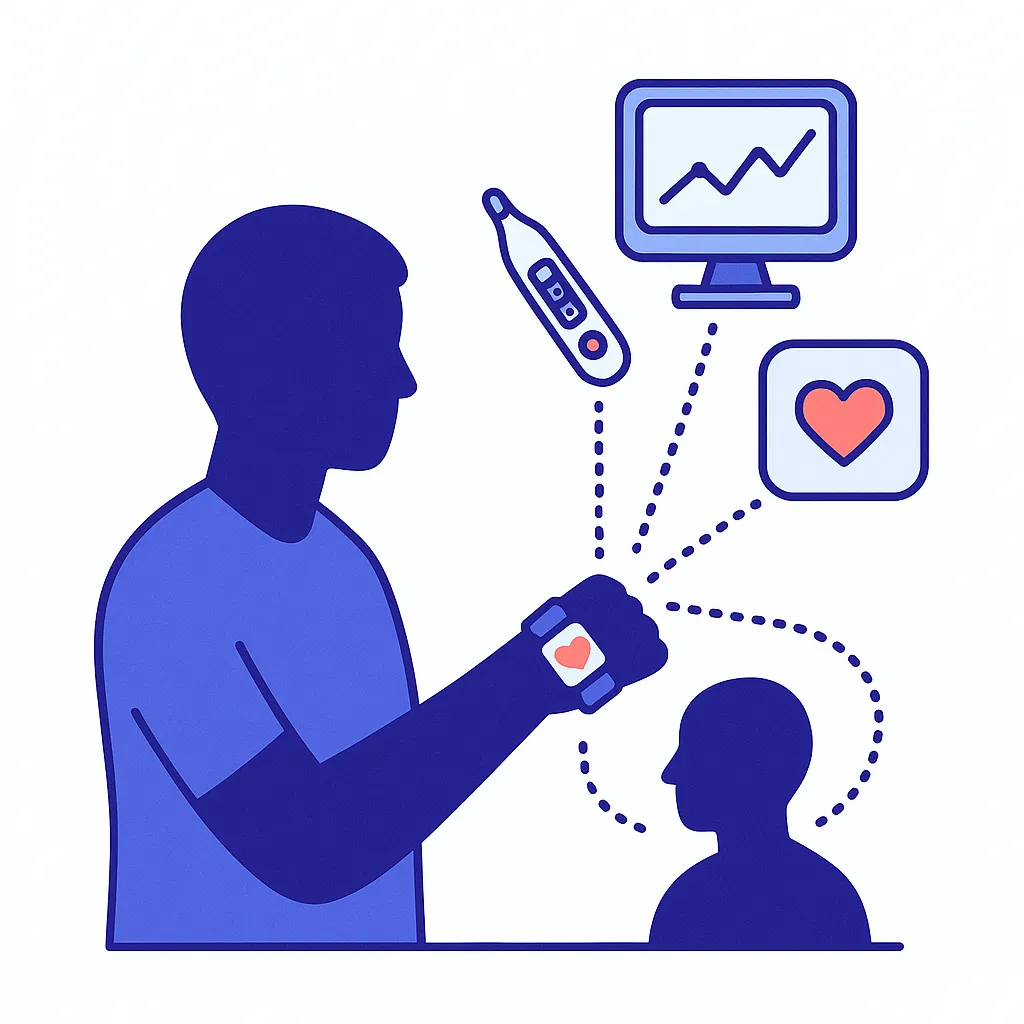

Digital tools like secure messaging and video consultations foster trust and connectivity between patients and providers. AI-powered chatbots offer immediate assistance and tailored health information, enhancing the patient experience and streamlining communication processes.
Pulse Health, a cloud-based platform for the life sciences industry, integrates and centralizes data for better patient engagement. It empowers teams to plan, launch, and automate personalized omnichannel campaigns, ensuring patients receive timely information. Utilizing these technologies helps create effective engagement strategies, leading to better health outcomes and increased patient satisfaction.
Enhancing Communication Between Patients and Providers
Clear and secure communication is foundational for effective patient engagement. Ensuring data security and privacy builds patient trust, encouraging active participation in their healthcare journey. Feeling safe and respected makes patients more likely to share sensitive information, leading to better health outcomes.
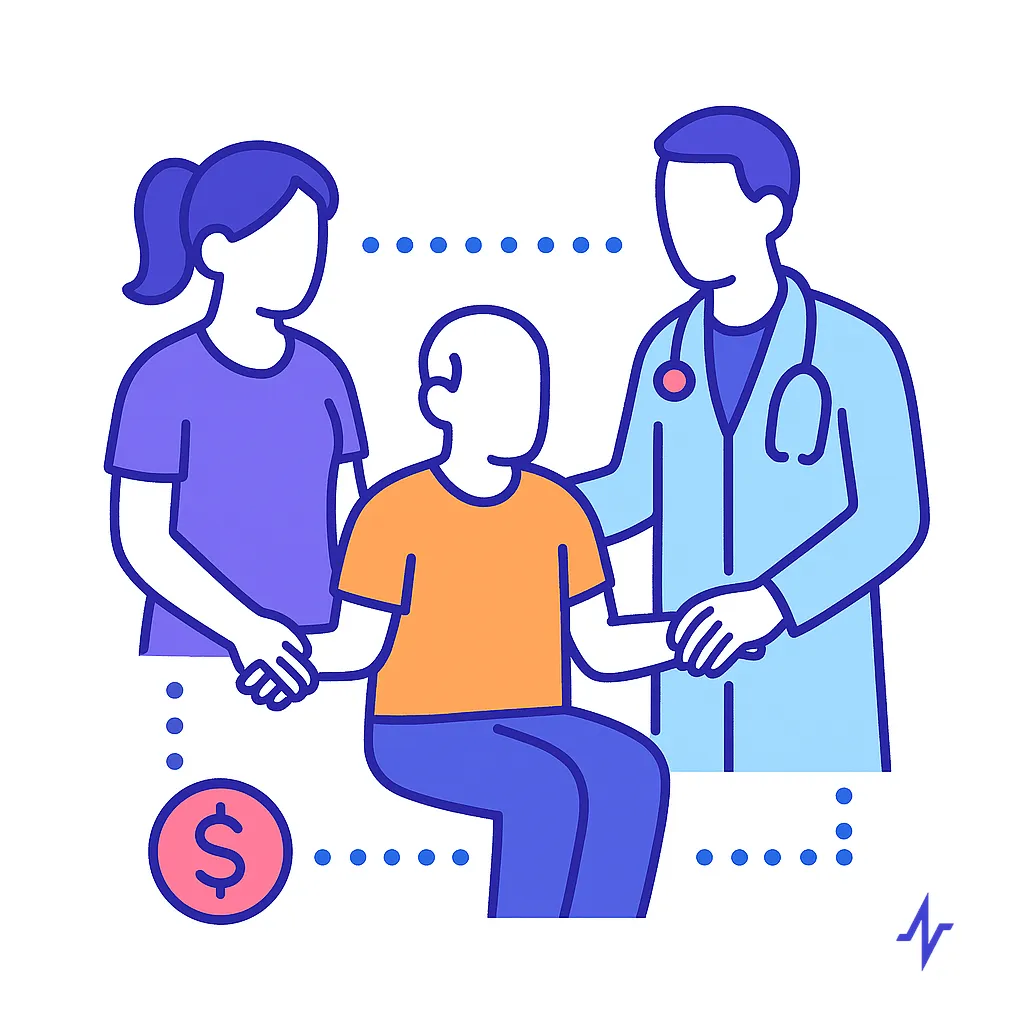
Effective communication strategies, like asking open-ended questions and using motivational interviewing, enhance patient interactions.
These techniques encourage patients to express concerns and actively participate in care decisions.
Additionally, sitting during consultations fosters a more trusting and intimate environment, strengthening the patient-provider relationship.
Digital tools like virtual visits and language interpreters enhance provider-patient communication, ensuring patients receive accurate information and feel understood despite language barriers or geographical constraints. Prioritizing clear and effective communication improves patient engagement and health outcomes.
Educating Patients for Better Health Outcomes
Effective patient education is crucial for improve patient health outcomes. Engaged patients who understand their conditions and treatment plans are more likely to adhere to therapies, reducing complications and emergency admissions. Online resources empower patients by providing accessible information about their health.
In diseases like breast cancer, patient education is especially important, as understanding treatment options and adhering to therapies such as Tamoxifen can significantly improve treatment outcomes.
Patient education materials should be written at a fifth-grade reading level or simpler to ensure comprehension, making health information accessible to those with limited health literacy.
Valuing patient education when incorporating new tools into care plans equips patients to manage their conditions and make informed decisions.

Tailored patient education is key to successful engagement. Many patients struggle to engage due to inadequate knowledge and limited access to tools. Providing tailored education addresses these barriers, enhancing engagement and improving health outcomes.
Personalizing Patient Interactions
Personalizing patient interactions is crucial for effective engagement. Collecting demographic and preference information enhances understanding between patients and providers, leading to more meaningful interactions. Awareness of patients’ social circumstances allows healthcare providers to tailor care plans to individual needs.

Healthcare organizations can create personalized engagement plans using customer journey maps and marketing technology.
Many healthcare organizations in the healthcare industry utilize data analytics and machine learning to uncover patterns in patient data, helping to personalize treatment plans and communication strategies.
This personalization ensures effective engagement tailored to individual needs, leading to better health outcomes.
Treating patients as individuals with unique needs is fundamental to engagement. Recognizing and addressing these needs creates a supportive and personalized care environment, enhancing satisfaction, driving engagement, and improving health outcomes. Personalization also empowers patients to take an active role in their own healthcare, fostering greater involvement and better decision-making.
Utilizing Data for Targeted Engagement
Utilizing data is crucial for improving engagement strategies. Pulse Health offers:
- Centralized data with pharma-focused integrations and flexible APIs, creating a single source of truth
- Insights that help healthcare providers understand patient demographics, psychographics, social data, behavior, and clinical data
- Support for developing more targeted engagement strategies

Predictive analytics uses statistical models to forecast patient outcomes, allowing for proactive engagement. Predicting which patients are at risk of non-adherence or poor outcomes enables early intervention and necessary support to keep them engaged.
Pulse Health’s enriched data allows precise segmentation and targeting of the right audiences, including hard-to-reach healthcare professionals. This targeted engagement ensures patients receive personalized, relevant information, increasing engagement and improving health outcomes.
Encouraging Shared Decision Making
Shared decision making enhances patient engagement, leading to improved health outcomes and overall satisfaction with the healthcare system. A systematic review involving patients in care decisions enhances their commitment to treatment, leading to better adherence and health outcomes.
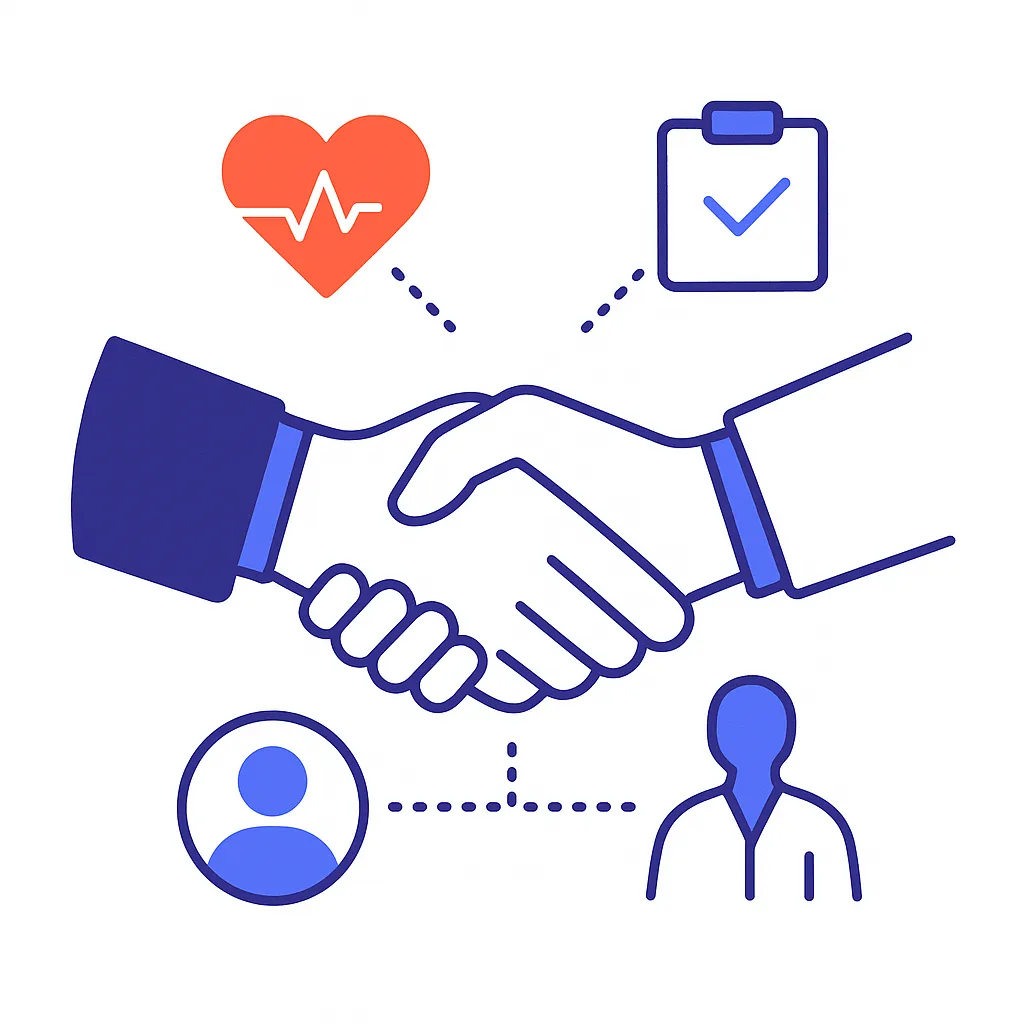
Decision aids facilitate discussions about treatment options, helping patients understand the implications of various choices.
Shared decision making also helps patients understand and commit to their treatment regimen, which improves adherence and overall outcomes.
Effective communication through shared decision making leads to better informed consent, ensuring patients fully understand their treatment plans. This model emphasizes a partnership, prioritizing patient input in decisions.
Shared decision making fosters meaningful patient-provider relationships, improving healthcare experiences. It sets realistic expectations for treatment and recovery, increasing patient satisfaction and engagement. Incorporating shared decision making into engagement strategies creates a more collaborative approach and supportive care environment.
Patient Engagement and Health Systems
Patient engagement is a cornerstone of successful health systems. Engaged patients are more likely to follow treatment plans, attend follow-up appointments, and effectively manage chronic conditions, all of which contribute to improved clinical outcomes and greater patient satisfaction.
Healthcare providers play a vital role in fostering patient engagement by involving patients in decision-making, delivering patient-centered care, and offering ongoing support through patient education and counseling.
These efforts help patients feel valued and empowered, increasing their commitment to their own health.

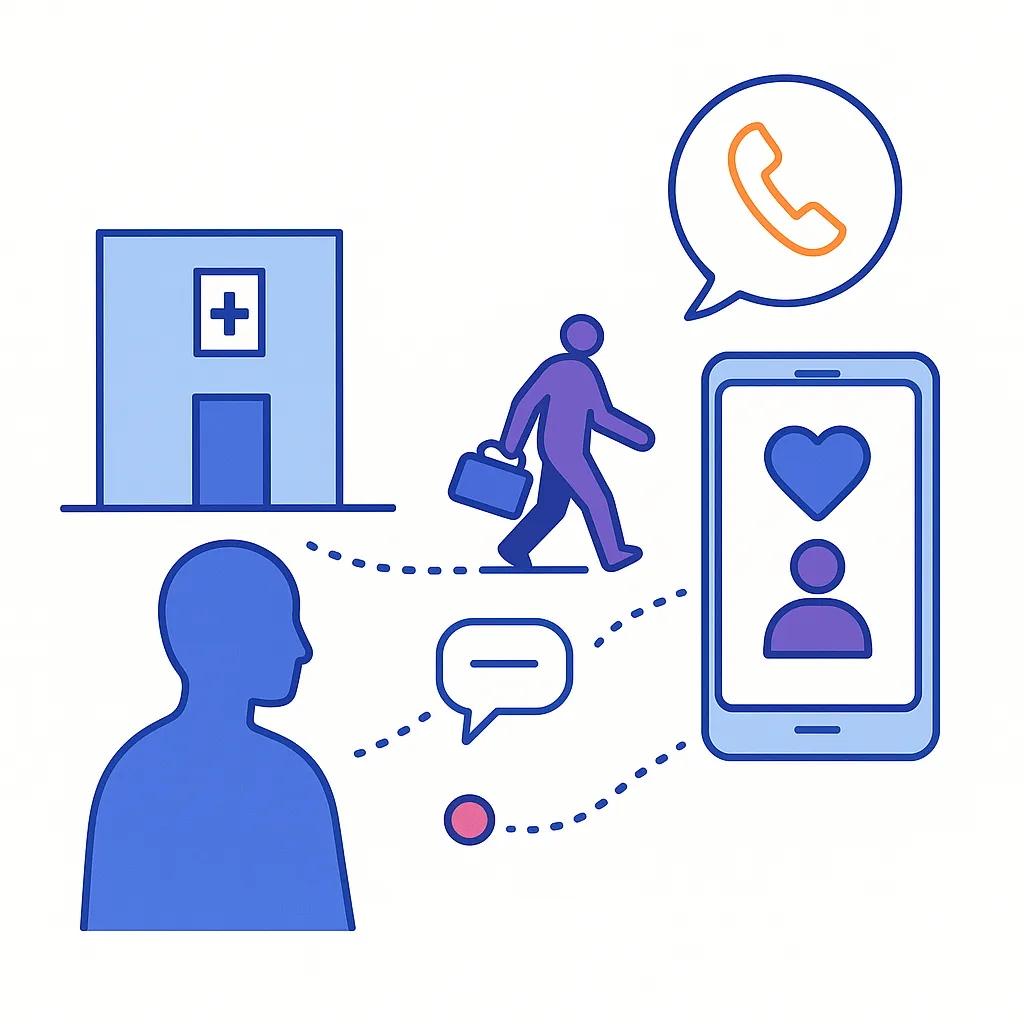
Health systems can further promote engagement by implementing a variety of patient engagement strategies, such as patient portals, mobile health apps, and telehealth services.
These digital tools make it easier for patients to access information, communicate with their care teams, and stay on track with their treatment plans.
By prioritizing patient engagement at every level, health systems can reduce costs, improve clinical outcomes, and enhance the overall patient experience. Investing in engagement strategies not only benefits individual patients but also strengthens the entire healthcare system, leading to healthier communities and more sustainable care delivery.
Continuous Engagement Through Aftercare
Continuous engagement through aftercare is essential for maintaining adherence and improving health outcomes. Regular follow-ups and continuous post-discharge communication significantly lower readmission risk, leading to increased patient satisfaction and trust in healthcare providers.
Telemonitoring allows providers to track vital signs remotely, enhancing proactive care and overall patient experience.
Patient portals provide continuous access to health information, encouraging active health management.
Automated tools, such as personalized reminders and alerts, help patients stay aligned with their care plans.
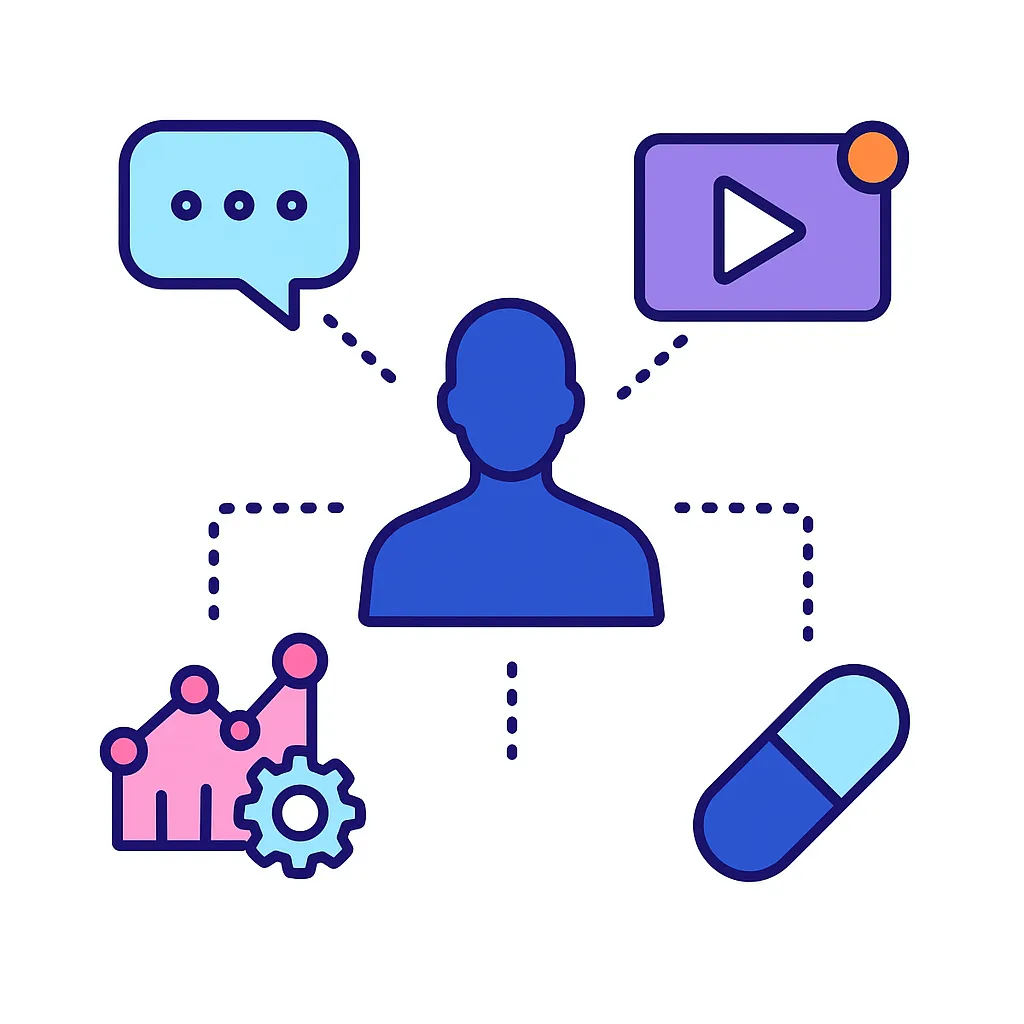
Engagement tools like mobile apps facilitate better adherence to aftercare instructions. Effective aftercare strategies improve mental health outcomes, ensuring patients feel supported throughout their healthcare journey. Prioritizing continuous engagement through aftercare enhances adherence and health outcomes.
Measuring and Optimizing Engagement Strategies
Measuring and optimizing engagement strategies is crucial for continuous improvement in healthcare delivery. Real-time analytics provide valuable insights into the effectiveness of engagement strategies, allowing providers to refine their approaches over time. Pulse Health offers real-time reports and analytics for effortless performance tracking and strategy optimization.

Effective tracking of engagement outcomes helps align healthcare services with patient expectations.
Understanding what works allows providers to make data-driven decisions to enhance engagement.
Pulse Analytics, offering real-time visibility into campaign performance, professional behavior, and channel effectiveness, is invaluable for optimizing strategies.
Pulse Health’s intuitive dashboards and actionable insights enable teams to quickly optimize campaigns and adjust strategies on the fly. This agility ensures engagement strategies remain effective and relevant, leading to better health outcomes and increased patient satisfaction while empowering individuals to take charge of their own health.
How Pulse Health Can Help You Educate Patients, Increase Prescription & Treatment Adherence, and Improve Engagement
Pulse Health offers a comprehensive suite of tools designed to:
- Enhance patient engagement, education, and adherence
- Integrate with OptimizeRx to provide real-time affordability solutions and clinical messaging
- Improve medication adherence through targeted patient outreach
- Ensure patients receive timely information about medication education and savings
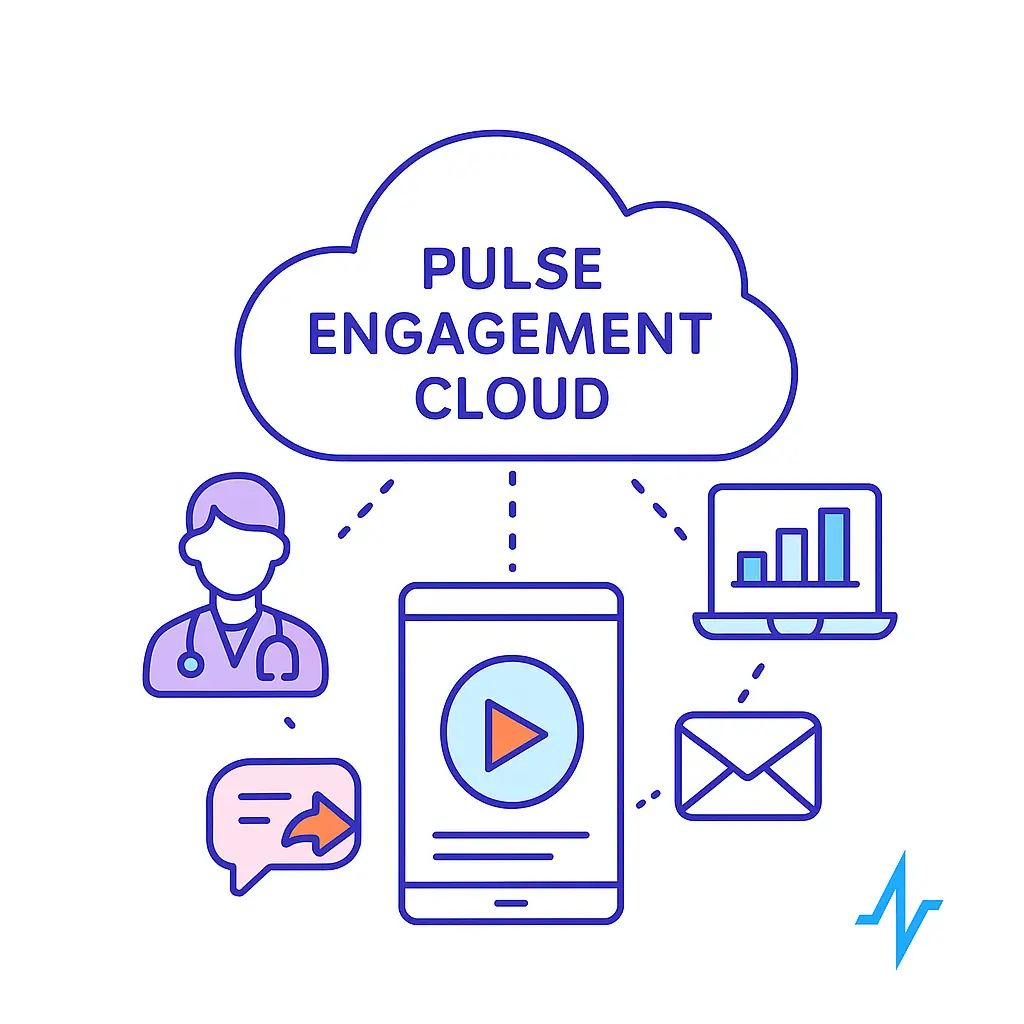
One of the significant barriers to medication adherence is cost concerns, with nearly one-third of patients abandoning prescriptions due to this issue. The Pulse Health and OptimizeRx integration addresses this problem by providing timely savings information, helping patients afford their medications and adhere to their treatment plans while avoiding skipping doses. This targeted approach not only improves adherence rates but also enhances overall patient satisfaction.

Pulse Health ensures compliance with HIPAA regulations while managing sensitive patient information through secure data exchanges.
The rapid implementation of the Pulse Health and OptimizeRx integration leads to swift improvements in adherence rates.
By leveraging Pulse Health’s tools, healthcare providers can create effective patient engagement strategies that lead to better health outcomes and increased patient satisfaction.
Effective patient engagement strategies are essential for improving health outcomes and reducing healthcare costs. By building a patient-centric approach and emphasizing patient education, healthcare providers can enhance patient adherence and satisfaction. Leveraging technology, such as telemedicine and digital communication tools, plays a crucial role in improving patient engagement and facilitating better communication between patients and providers.
Personalizing patient interactions and utilizing data for targeted engagement ensures that patient engagement strategies are tailored to individual needs, leading to better health outcomes.
Encouraging shared decision making and continuous engagement through aftercare further enhances patient adherence and satisfaction.

Pulse Health offers a comprehensive suite of tools and technologies to help healthcare providers educate patients, increase prescription and treatment adherence, and improve overall engagement. By implementing these strategies and leveraging the tools provided by Pulse Health, healthcare providers can create a more engaged and proactive patient population, leading to improved health outcomes and overall patient satisfaction.
Frequently Asked Questions
The key difference between patient adherence and patient compliance lies in the level of engagement; adherence signifies a proactive commitment to health and treatment plans, while compliance suggests a passive acceptance of medical instructions. Understanding this distinction is crucial for fostering better patient outcomes.
Technology significantly improves patient engagement by offering convenient access to healthcare services and real-time information, fostering trust and connectivity between patients and providers. As a result, this leads to enhanced health outcomes and a more personalized care experience.
Patient education is crucial for fostering health literacy, which empowers patients to comprehend and act on health information effectively. This understanding promotes self-care and adherence to treatment plans, ultimately resulting in improved health outcomes.
Data plays a vital role in patient engagement strategies by offering insights into demographics and behavior, thereby facilitating tailored and proactive engagement efforts. By utilizing predictive analytics, healthcare providers can improve outcomes through targeted interventions.
Pulse Health enhances medication adherence and patient engagement by integrating real-time affordability solutions and clinical messaging through OptimizeRx, effectively addressing cost concerns. Additionally, it provides personalized outreach tools and secure data management, resulting in improved health outcomes.



